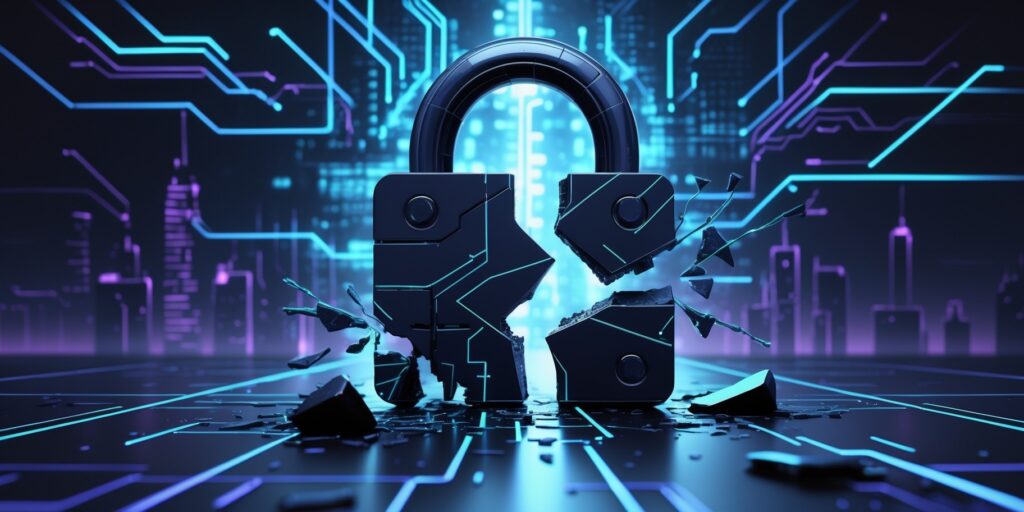The way we work has changed, and there’s no going back.
Remote work, once a temporary fix during the global pandemic, has become a permanent feature of modern business.
Across industries, employees have traded cubicles for kitchen tables and morning commutes for morning coffee at home.
And let’s be honest, there are plenty of reasons why.
But working from anywhere is great, until your cybersecurity doesn’t keep up. Home offices often lack robust protections, leaving businesses vulnerable to breaches.
As teams spread out, the attack surface widens, and cybercriminals know it. Unsecured networks, personal devices, and phishing attacks are just a few of the ways hackers try to steal your data and enter your systems.
In this article, we’ll discuss strengthening cybersecurity to stay competitive in the business world and operate remotely without troubles.
Let’s start with why remote work is here to stay and see why companies have no choice but to embrace it.
Remote Work Wins: Why Forcing Employees Back to the Office Is Backfiring
Let’s face it, the workplace has changed, and it’s not going back to how it was.
Businesses are increasingly adopting hybrid and remote models, not because they have to, but because it works.
The Data Says It All:
- 60% of companies now offer some form of hybrid work.
- Remote workers show a 13% increase in productivity (Stanford study).
- Job satisfaction and employee retention are significantly higher in flexible environments.
When employees are given the freedom to work where they’re most productive, they get more done, and they’re happier doing it.
No long commutes. Fewer office distractions. More time for deep work. It’s a model that works. In fact, data shows that people aren’t ready to go back to offices full-time.
Here’s what’s happening to companies compelling employees to return to office (RTO):
- Companies enforcing strict RTO policies saw a 14% increase in resignations.
- It’s not just any employees leaving; it’s top talent and senior leaders.
- Replacing them is taking 23% longer on average.
- Recruitment costs are rising due to extended hiring timelines and limited talent pools.
These departures create a ripple effect, taking expertise, leadership, and momentum with them.
The message from employees is clear: flexibility isn’t a perk anymore, it’s an expectation. But here’s where things get tricky: the more flexible your team’s setup is, the more complex your cybersecurity becomes.
So, the next big question is, how do you secure a distributed workforce without sacrificing the benefits of remote work?
Let’s take a closer look at the risks that come with this new normal.
Cybersecurity Risks of a Distributed Workforce
While remote and hybrid work models offer undeniable benefits, they also introduce a range of cybersecurity risks that simply don’t exist in a centralised office environment.
Without the right safeguards, you could be leaving your business wide open to cyber threats.
Here are some common and significant factors that put cybersecurity for remote teams at risk.
1. Public Wi-Fi Vulnerabilities
Working from a cafe might feel productive, but public Wi-Fi networks are notorious for being unsecured.
Attackers can intercept data being transferred over these networks, giving them access to sensitive company information without much effort.
2. Unsecured Personal Devices
Not every employee has a secure, company-managed device at home.
Personal laptops or tablets might be missing critical software updates or antivirus protections, making them easy targets for malware and ransomware.
3. Phishing & Social Engineering
Remote workers are often more isolated from IT teams and may be more susceptible to phishing emails or fraudulent phone calls.
Cybercriminals exploit this distance, using convincing scams to steal login credentials or deliver malicious payloads.
4. Data Leakage from Home Networks
Home networks often lack the level of security found in a corporate office.
Shared family devices, poorly configured routers, and weak passwords can all contribute to data exposure risks.
5. Using Unauthorised Software (Shadow IT)
When employees use personal applications or cloud services without the IT team’s approval, it creates “shadow IT” risks.
These unauthorised tools may not meet company security standards, leaving gaps that cybercriminals are eager to exploit.
Now let’s see how companies can make their cybersecurity tighter to accommodate remote teams.
12 Must-Have Cybersecurity Measures for Remote Workforces
Remote and hybrid work models offer flexibility, but they also introduce a wide range of security vulnerabilities. Protecting your business data requires more than good intentions.
It takes a layered, proactive strategy.
Here are 12 essential cybersecurity measures every business should adopt to secure a distributed workforce:
1. Multi-Factor Authentication (MFA)
MFA reduces the risk of credential-based attacks by requiring a second form of identity verification, usually a time-sensitive code or biometric scan.
Even if an attacker gets hold of a password, they won’t get in without that second factor. It’s one of the simplest yet most effective defences against unauthorised access.
2. Endpoint Detection & Response (EDR)
EDR provides real-time visibility into remote devices, using machine learning to identify and isolate threats before they escalate.
It’s essential for detecting advanced attacks that may bypass traditional antivirus tools, especially when employees are spread across different networks.
3. Encrypted VPNs for Remote Access
A Virtual Private Network encrypts all data transmitted between a remote device and your company network.
This shields sensitive information from interception, especially when employees connect via public or unsecured Wi-Fi, like at cafes or airports.
4. Device Management (MDM/BYOD Policies)
Mobile Device Management (MDM) solutions let you enforce security settings, push updates, and remotely lock or wipe lost devices.
This is crucial in BYOD (Bring Your Own Device) environments, where personal laptops and phones are used to access corporate data.
5. Regular Security Awareness Training
Even the best technology can’t stop an employee from clicking a malicious link if they don’t know what to look for.
Security training builds a culture of vigilance, teaching your team how to identify and report suspicious behaviour before it becomes a problem.
6. Secure Cloud Collaboration Tools
Using reputable cloud tools like Microsoft 365 or Google Workspace is a start, but proper configuration is everything.
Limit file-sharing permissions, enforce access controls, and monitor activity to prevent sensitive data from leaking or being mishandled.
7. Regular Patching and Software Updates
Hackers constantly scan the internet for outdated software they can exploit.
Make sure all devices and applications are updated regularly, automatically, if possible, to patch known vulnerabilities before attackers find them.
8. Strong Password Management Practices
Enforce policies that require long, complex passwords and discourage reuse across platforms.
Implement a password manager to store credentials securely and help users generate strong, unique passwords for every login.
9. Zero Trust Architecture
With Zero Trust, no user or device is trusted by default, even inside the network.
Access is granted based on identity, device health, and context, significantly reducing the chances of lateral movement during a breach.
10. Data Loss Prevention (DLP) Tools
DLP tools help monitor, detect, and block the unauthorised transmission of sensitive data.
They can prevent employees from sending confidential files externally, copying data to USB drives, or uploading documents to unapproved platforms.
11. Secure File Sharing Protocols
Avoid consumer-grade or unverified file-sharing apps that don’t offer adequate encryption or access controls.
Implement enterprise-grade alternatives with user authentication, audit trails, and the ability to revoke access instantly when needed.
12. Remote Incident Response Plan
Being prepared for a breach is just as important as trying to prevent one.
Design an incident response plan specifically for remote environments, with clear roles, escalation paths, and tools ready to contain threats quickly.
With remote and hybrid teams here to stay, your cybersecurity approach must evolve.
Implementing these 12 measures will reduce your risk and ensure your business can operate securely. Besides these measures, you can also put policies in place that make remote work secure.
How to Balance Flexibility with Security
The rise of remote and hybrid work doesn’t mean you have to pick between employee freedom and business security.
In fact, the most forward-thinking companies are proving that you can have both if you put the right structure in place. Here’s the key: build guardrails, not roadblocks. See how:
1. Create Clear Hybrid Work Policies
Flexibility thrives within well-defined boundaries. Establish clear policies that outline:
- Where and how employees can work
- Approved devices and apps
- Security expectations and compliance standards
This helps employees understand what’s allowed and protects your business without micromanaging.
2. Use Tools That Support Both Productivity and Protection
Modern software solutions are designed to balance both sides of the equation. With the right setup, you can:
- Monitor device health and compliance without invading privacy
- Track productivity and workflows without excessive oversight
- Secure collaboration platforms that integrate with your current systems
The goal isn’t surveillance, it’s visibility and control.
Conclusion: Secure the Future of Work, Today
Remote work isn’t just a trend, it’s the future. And businesses that embrace it are gaining a competitive edge in talent, productivity, and cost-efficiency.
But flexibility without cybersecurity is a gamble you can’t afford to take.
To succeed long-term, you need a strategy that blends modern work models with modern protection, because a remote workforce is only as strong as the systems that support it.
So, ask yourself: Is your cybersecurity strategy ready for the long-term reality of remote work?
If not, now’s the time to make it a priority.
We can help you achieve a secure remote environment that acts like a tank against cybercriminals. Reach out to learn more about how we can help!








